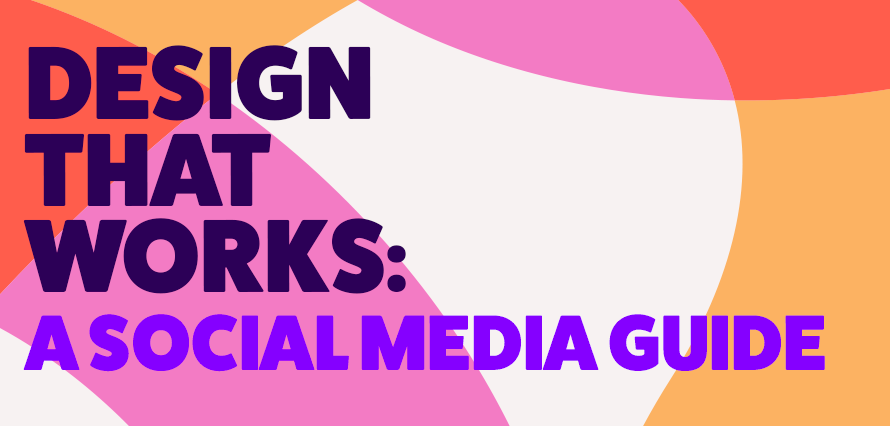August 7, 2025

If you’re a designer or marketer who’s tired of creating content that gets lost in the endless scroll, this one’s for you.
Know Your Canvas (And Its Quirks)
Each platform has its own personality, and your designs need to respect that. Instagram loves vertical formats that fill the screen, whilst LinkedIn prefers clean, professional layouts that won’t look out of place in a boardroom. TikTok? Go bold or go home.
The golden rule here is simple: design for the platform, not against it. Your beautifully crafted 16:9 landscape image might look stunning on your monitor, but it’ll be a tiny, squished mess in someone’s Instagram feed.
Quick size cheat sheet:
- Instagram feed: 1080 x 1080px (square) or 1080 x 1350px (portrait)
- Instagram Stories: 1080 x 1920px
- Facebook posts: 1200 x 630px
- LinkedIn: 1200 x 627px
- Twitter/X: 1200 x 675px
Less Is More (Seriously)
Here’s the thing about social media: people are scrolling fast. Really fast. You’ve got about 1.5 seconds to grab their attention before they’ve moved on to the next cat video.
Cluttered designs are the enemy here. One clear message, one focal point, and plenty of white space. Think of it as a billboard design – if someone driving past at 70mph can’t understand it instantly, it’s too complicated.
Typography That Doesn’t Suck
Your gorgeous custom typeface might be illegible on a 5-inch phone screen. Stick to fonts that are:
- Highly legible at small sizes
- Web-safe (or embedded properly)
- Consistent with your brand voice
And for the love of all that’s holy, make sure there’s enough contrast. That pale grey text on a slightly less pale grey background might look minimalist and chic, but it’s useless if nobody can read it. This will also help those who are visually impaired!
Colour Psychology Isn’t Just Marketing Waffle
Colours genuinely affect how people feel about your content. Red creates urgency (perfect for limited-time offers), blue builds trust (great for financial services), and green suggests growth or eco-friendliness.
But here’s the kicker – colour also affects performance. Bright, contrasting colours perform better on dark-mode interfaces, whilst softer palettes work well for lifestyle brands. Test different colour combinations and see what your audience responds to.
The Rule of Thirds (And When to Break It)
The rule of thirds isn’t just for photographers – it works brilliantly for social media design too. Place your key elements along those intersecting lines, and your compositions will feel more balanced and engaging.
That said, sometimes centred, symmetrical designs work better, especially for quote posts or announcements. The key is being intentional about your choice.
Mobile-First Isn’t Optional Anymore
About 90% of social media users access platforms via mobile, so if your design doesn’t work on a phone, it doesn’t work full stop.
Design for mobile first, then scale up. Text should be readable without zooming, buttons should be easily tappable, and the overall layout should make sense on a vertical screen.
Consistency Creates Recognition
Your social media designs should feel like they belong to the same family. That doesn’t mean every post needs to look identical – that’s boring. But there should be consistent elements: colour palette, typography choices, logo placement, or even just a consistent style of photography.
Think of brands like Innocent Drinks or Oatly. You’d recognise their posts in your feed even without seeing their logo, and that’s the goal.
Animation and Video: Use Wisely
Motion graphics can be incredibly effective for grabbing attention, but they can also be incredibly annoying if not done right. A subtle animation or cinemagraph can make your post stand out, but avoid anything that feels like a flashing banner advert from 2003.
For video content, remember that many people watch with sound off, so your visual storytelling needs to work silently too.
Test, Learn, Repeat
Here’s the uncomfortable truth: what works for one brand might not work for another. The only way to know what resonates with your audience is to test different approaches and actually look at the data.
Try different colour schemes, layouts, and styles. See which posts get more engagement, more clicks, more saves. Then do more of what works and less of what doesn’t.
Good social media design isn’t about following every trend or using the flashiest effects. It’s about clear communication, brand consistency, and understanding how people actually use these platforms.
Keep it simple, keep it legible, and always design with your audience in mind. The rest is just details.
If you liked this blog and wanted to learn more – or just talk social media, then hit us up! We’d love to chat.